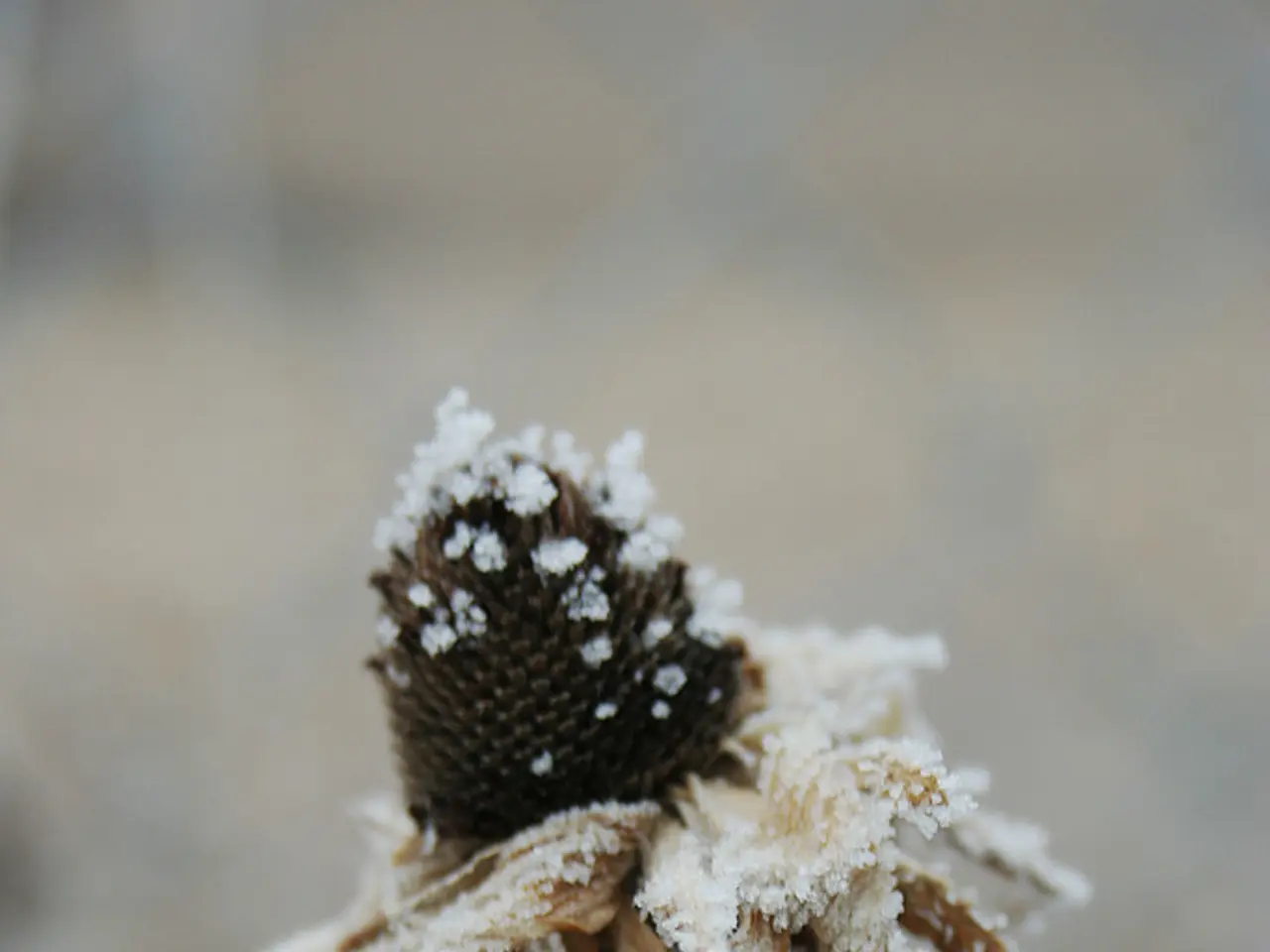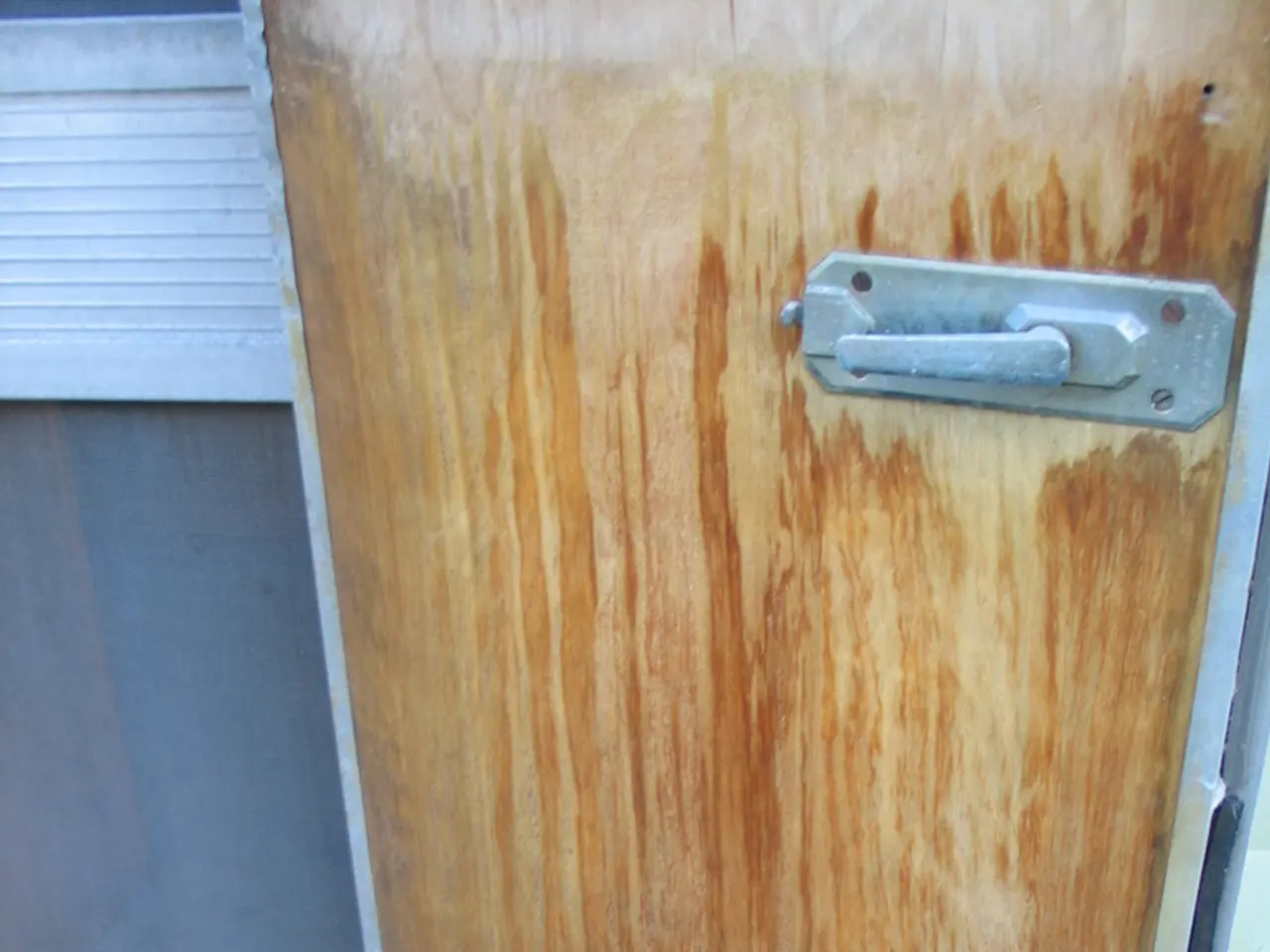Insulating Greenery from Frost through Burlap Wrapping
In the colder months, frost can pose a significant threat to plants, causing damage and affecting crop yields. However, a simple and cost-effective solution exists: burlap covers. These covers provide effective protection against frost, insulating plants and acting as a physical barrier against cold winds and frost.
Burlap, a coarse, woven fabric made from natural fibers, is often used as a shield from frost and snow during the winter season. It acts as an insulating layer that reduces heat loss from plants and soil, keeping the temperature around the plants warmer during cold nights. This barrier prevents frost from settling directly on leaves and stems, which can cause damage.
One of the key advantages of burlap covers is their breathability. Unlike plastic, burlap allows air and moisture exchange, which helps prevent moisture buildup and ice formation on plant surfaces that can worsen frost damage. Burlap also traps a layer of air around plants, acting as a buffer against sudden temperature changes.
When draped properly, burlap prevents frost from settling directly on delicate foliage, reducing freezing injury. It blocks cold, drying winds that increase frost damage risk, and it helps trap heat radiated from the ground and plant surfaces, maintaining a slightly warmer microenvironment around the plant.
Maintaining burlap covers during frosty weather is crucial to ensure they continue to provide effective protection for your plants. Check for damage before frosty weather arrives to prevent cold air from seeping through and reaching plants. Secure burlap covers to prevent them from blowing away in strong winds.
Burlap covers are lightweight and flexible, making them easy to handle and install over plants of various sizes and shapes. They are also cost-effective and readily available, making them accessible to both small-scale gardeners and commercial growers.
In addition to protecting plants from frost, burlap covers support healthy plant growth by preserving soil moisture and minimizing stress. They can conserve moisture in the soil, preventing evaporation and reducing the need for frequent watering.
While frost events can be influenced by climatic factors such as changes in temperature patterns and the frequency of extreme weather events, using burlap as a plant cover can help mitigate the impact of frost on plants. By providing insulation and a physical barrier against cold winds, burlap helps shield plants from freezing temperatures and frost, ensuring a healthier and more productive growing season.
[1] Gardening Know How. (2021). Using Burlap to Protect Plants from Frost. Retrieved from https://www.gardeningknowhow.com/garden/protect/using-burlap-to-protect-plants-from-frost.htm [3] The Spruce. (2021). Winter Plant Protection: How to Use Burlap. Retrieved from https://www.thespruce.com/how-to-protect-plants-with-burlap-3160374 [4] University of Illinois Extension. (2021). Protecting Plants from Frost. Retrieved from https://web.extension.illinois.edu/cfivms/pdf/26717.pdf
- In environmental science, burlap covers, a cost-effective and readily available solution, are used in gardening and home-and-garden settings as a protective measure against climatic changes like frost, particularly during the winter season, by acting as an insulating layer around plants.
- By utilizing burlap in lifestyle practices, gardeners can help minimize the effects of climate-change-driven extreme weather events on their plant's health, as burlap reduces heat loss from plants and soil, preventing damage from frost and supporting healthier and more productive growing seasons.
- In addition to offering frost protection benefits, environmental-science research highlights that burlap covers also contribute positively to the plants' lifestyle by preserving soil moisture and minimizing stress during cold weather, making them an excellent tool for maintaining a harmonious living environment between plants and their surrounding environment.




